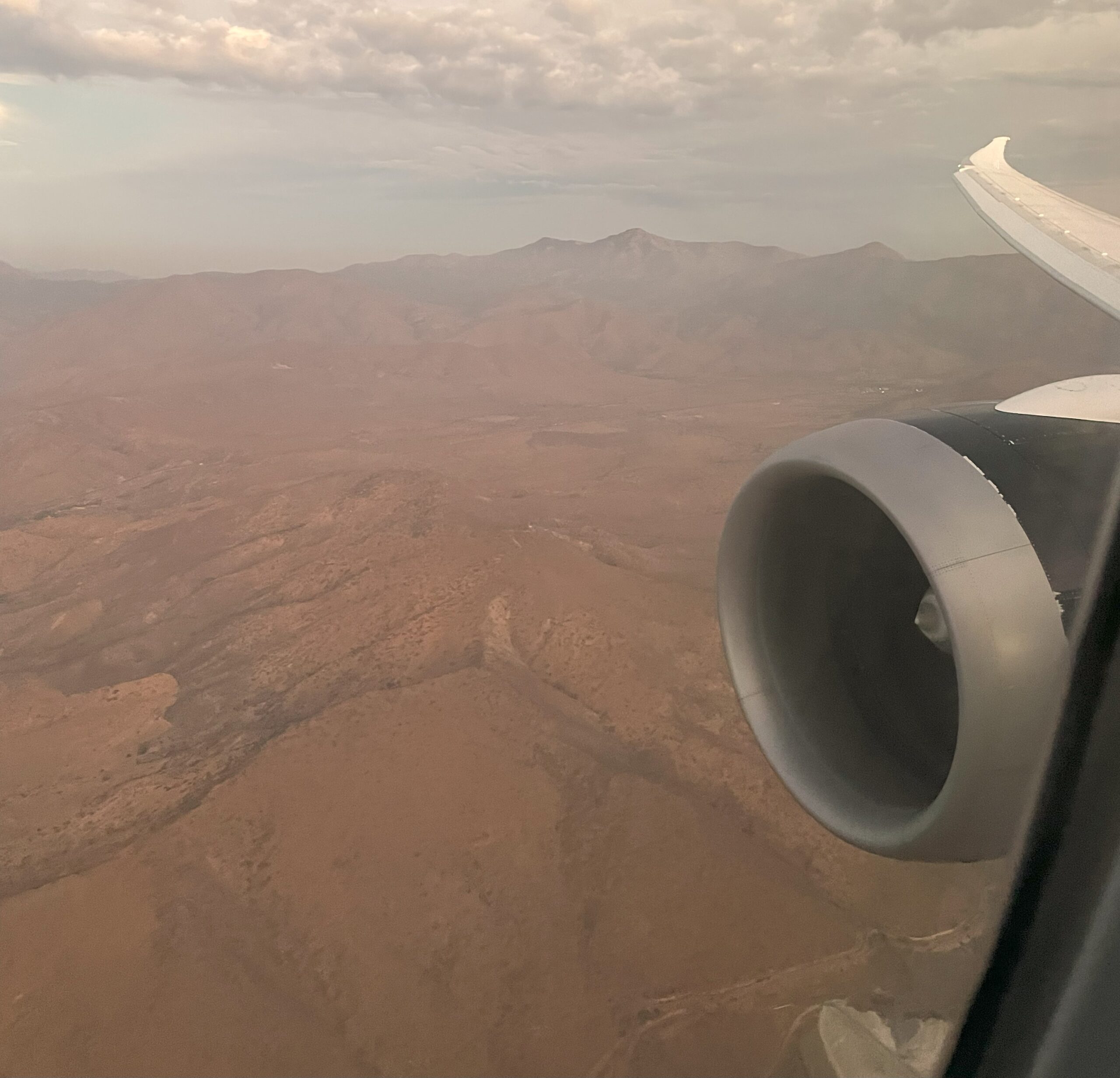I confess I cannot stop marveling at the magic of flight. Like a child on his first plane ride, each one still excites in me a sense of wonder and miracle. So the flight to Chile was an even more remarkable journey.
The evening is overcast in Toronto; the early April air damp and cold. While darkness falls, the plane awaits us, idling, like an athlete about to go into competition, attendants fluttering about it. Trucks with long fuel lines, and ramps loading luggage, food trucks buzzing about – as though preparing their champion for a vast competition – and indeed it is an epic competition: the journey to Santiago, almost 10,000km and 11 hours away; crossing almost every landscape on earth — lakes, oceans, mountain ranges, glaciers and deserts.
Today, our airliners are not hesitant to leap into the air and set their wheels down as far away as Tokyo or Sydney. This marvelous machine is at liberty to ignore, at a glance, all the history and the immense voyages to Chile that came before, from the first humans migrating from Beringia ten thousand years before, through north and south America, taking thousands of years to make their journey, and later and more recent generations taking years by sea and land to make the trip. Instead today, we float in comfort, bored and impatient for 11 hours.
The 787 hardly labors as it lifts over 200 tons into the air with a slight shudder. Gaining altitude, it flies southward, straight as a needle, indifferent to the vile contours of the earth below.
The great Rolls Royce Trent 1000 engines, each the size of a truck, but grown fat and round, patiently and smoothly gulp the night air and with sudden but quiet fury thrust it backward, all the while sipping from their private reserve of fuel, cached away in the wings, its weight nearly half of the entire ship. Every minute they gulp a hundred litres, the size of two car tanks, over and over again for eleven hours.
Six hours later, in the darkness, we slide noiselessly over the equator at Quito, Ecuador, with the planet spinning slowly beneath us. Having coolly dispensed with 45 degrees of latitude and the northern hemisphere, we embark afresh on the southern one. We are reminded that we are far from home, with no familiar waypoints once we leave Panama. Cities appear on the map screen which register blankly: Guayaquil, Iquique, Antofagasta.
Now the big plane glides silently through the dawn, with the silhouettes of the Andes stained red by the rising sun, the moon still shining serenely over the east sky. Out of the port windows, we can see the mighty profile of Aconcagua, the highest point in the Americas.

The long descent begins, driving toward the narrow pass in the Santiago valley where the little mile of asphalt is waiting to greet our tired wheels in the early dawn.



